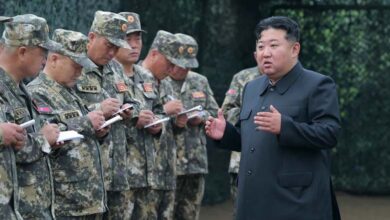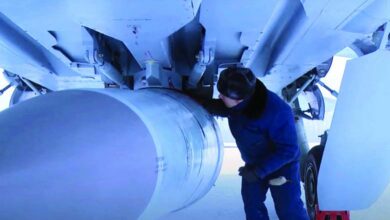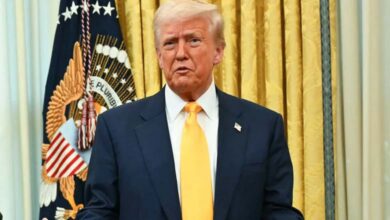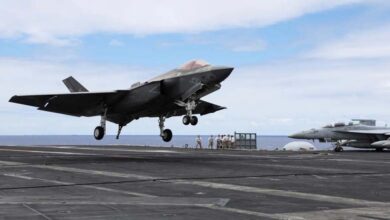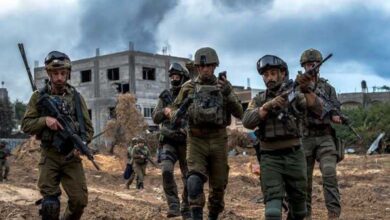Doomsday Weapons: Who Owns Them and Where Are They Stored?
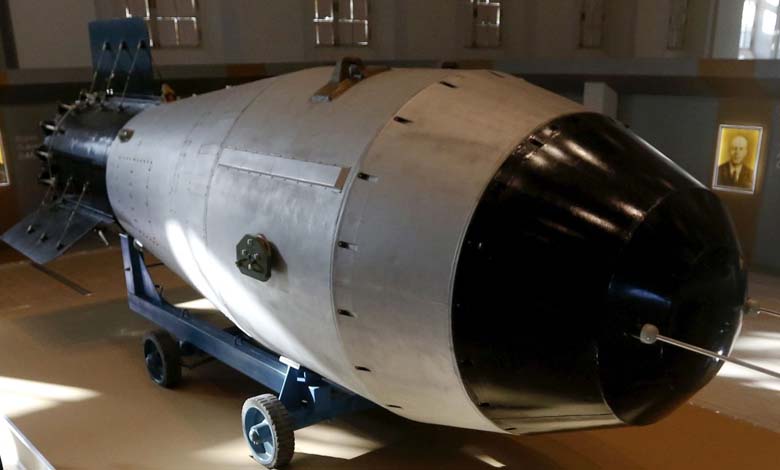
A recent wave of high-stakes rhetoric has reignited global fears of nuclear escalation, raising concerns about a new arms race unbound by Cold War-era rules and safeguards.
Former U.S. President Donald Trump announced the deployment of nuclear submarines in response to threats from Russian Security Council Vice-Chairman Dmitry Medvedev. The move was widely seen as an unprecedented escalation amid increasing tensions between nuclear powers.
-
Cold War on the Horizon… Russia: European Capitals are Targets if Missiles are Deployed in Germany
-
“The Deadly Lake”.. The Ghost of the Cold War Haunts a Russian Region
In a Telegram post, Medvedev made indirect reference to Soviet-era emergency nuclear strike capabilities. Trump labeled these remarks as “extremely provocative” and warned of “unintended consequences.”
Beneath the headlines lies a sobering reality: vast, poorly monitored nuclear stockpiles and a shift in the global arms dynamic that some experts fear could surpass Cold War dangers in complexity and volatility.
-
Nuclear War Message: The Soviet Dead Hand Confronts America’s Doomsday Missile
-
Japan Doubles Shelters… Preparing for World War III?
Where Are Nuclear Weapons Located?
According to The Washington Post, nine countries currently possess nuclear weapons, including the U.S. and Israel. The Stockholm International Peace Research Institute (SIPRI) has warned of a looming new arms race.
As of early 2025, the global stockpile is estimated at 12,241 warheads. Russia and the United States control 87 percent of this arsenal. The remaining 13 percent is held by the UK, France, China, India, Pakistan, North Korea, and Israel.
-
Drone Revolution: The Ukraine War Reshapes U.S. Military Priorities
-
“Military Service”: Europe’s Concerns Drive towards “Mandatory” Service
Roughly 9,614 warheads are believed to be in military stockpiles, with 3,912 categorized as deployed—meaning they are mounted on active intercontinental missiles, aircraft, submarines, or ships.
Exact numbers remain speculative due to secrecy. Only the U.S., UK, and France have disclosed partial figures on their stockpiles. Israel, presumed to be the only nuclear power in the Middle East, maintains a policy of ambiguity but is estimated to have around 90 nuclear weapons.
-
World War II bomb disrupts Paris trains
-
U-Boats: Germany’s Terrifying Weapon That Changed the Course of War
Which Countries Host Foreign Nuclear Weapons?
Although only nine countries officially possess nuclear arms, six others host foreign weapons on their soil. Under NATO nuclear sharing, the U.S. stores nuclear bombs in five allied countries: Germany, Italy, the Netherlands, Belgium, and Turkey. A sixth, Belarus, is reportedly hosting Russian weapons.
In March 2023, Russian President Vladimir Putin announced plans to station tactical nuclear weapons in Belarus. By June, President Alexander Lukashenko claimed the deployment had begun. Yet the 2025 SIPRI report notes a lack of definitive evidence confirming this.
-
World War II Threatens the UK with 170 ‘Dormant’ Bombs
-
“Shadow War”… Europe Plans an Attack on Russian “Ghosts”
What Is the Future of the Global Nuclear Arsenal?
At the height of the Cold War, the global nuclear arsenal exceeded 70,000 warheads. While recent decades saw significant reductions, rising geopolitical tensions are reversing that trend.
SIPRI’s 2025 report warns of a new kind of arms race—one likely to be more diverse, more dangerous, and more destabilizing. Most experts expect nuclear stockpiles to remain stable or grow modestly in the near term.
-
World War II Deception: A Japanese Military Ship in the California Desert
-
The Victory Sign (V)… A Historic Journey that Began with the Hundred Years’ War
The conventional belief that nuclear deterrence provides stability is increasingly being challenged. Western military support for Ukraine, despite repeated Russian nuclear threats, suggests that nuclear capability no longer guarantees immunity from conflict.
Moreover, defensive military buildups may provoke further nuclear expansion, creating a feedback loop that undermines global strategic balance.
In short, the era of “Doomsday” weapons is far from over. It may be entering a new, more precarious phase.
-
World War Preparations? Europe’s Weapons Stuck on the Rails
-
Italy warns against Tunisia falling into the hands of Russia and China


